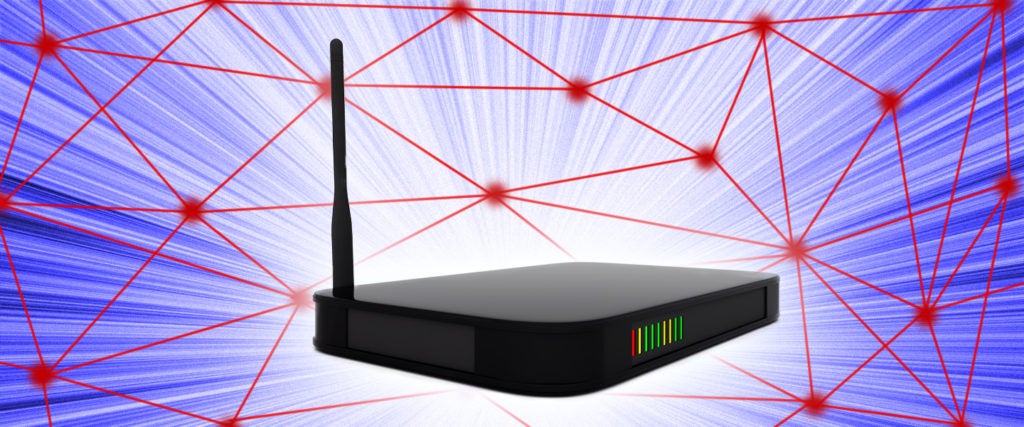When your phone or cable company comes to your home to install internet… uhhh, what exactly is going on? Why does the company offer different speeds? Does that mean they’re actually throttling my internet if I don’t buy the most expensive one? And should I just buy the most expensive one?
In order to have those internet speeds explained, we’ve teamed up with Ron Johnson, an associate professor at the University of Washington’s Information School, who specializes in internet architecture and network infrastructure, to get some speedy answers.
I really need these internet speeds explained, but, y’know, simply. When the service technician comes to my home to “install” internet, what exactly are they doing?
Johnson says they’re doing a number of things: They might be installing new copper wires or fiber-optic cables, or if not, then checking to see if what’s already in your home is up to snuff — that there’s good connectivity between your home all the way to the internet service provider’s infrastructure underground or on utility poles.
Next, of course, a competent tech will test your modem and router, which might entail some simple software configuration in order to connect to your provider’s infrastructure, and then onto the internet. Maybe they’ll set you up with a customized WiFi SSID and password. Oh, and they’re often also there to upsell you on other services, of course.
But just to be clear, it’s not like they’re actually flipping a switch or anything. By the time they visit, the actual internet service to your home has been turned on somewhere else on the network (maybe back at headquarters) and is live when the installer arrives.
So what’s with the different speeds of internet? Are all those internet speeds real?
They certainly are, according to Johnson. “It’s different, because they make it different,” he says. Different companies handle speeds in different ways. Some use what’s called traffic-shaping software to create these different service tiers — it’s a way to segment the market, and to offer their product at different price points that enough different people can afford.
And why do they need to do that, exactly?
Besides the opportunity to maximize their profits, honestly it’s also because most telephone or cable companies’ networks aren’t built to handle so much traffic. While their networks are designed to provide the fastest speed they offer, they build their system, laying copper wires or optical fiber cables in the ground (or stringing them up on utility poles) using the most economically effective components and measurements. Say 200 houses are connected to a certain segment of their system — practically, it means most of the systems aren’t built to handle maximum capacity all the time, because they know that not everyone will click “send” at exactly the same instant, and they’re all downloading or uploading different things at different times. People who design these systems have a lot of statistical evidence to base their design decisions upon, according to Johnson.
So if I buy the package that gets me 500 megabits per second, am I actually getting that speed?
“Paying for something doesn’t mean you’re going to get it,” Johnson says. “Typically the service that’s offered, if you read the fine print, is pretty much that you get up to a certain amount, not that you get a certain amount. And it’s pretty unlikely that you’ll get the amount.”
Dang it. Because of the amount of traffic on the infrastructure?
Yes. Johnson knows of one residential internet service provider that over-engineers its infrastructure — which is to say that everyone can get everything they’ve paid for at the maximum level that it’s been paid for. “That’s very unusual in the business,” Johnson says. “So typically, if you’re an engineer and you have a budget, what you’re trying to do is optimize the cost-effectiveness and the performance of the system. And that means you assume that statistically it’s unlikely that all the houses are going to try to use all of the capacity that they’ve bought at the same instant.”
If there are different tiers, and yet the infrastructure is designed to work at the fastest speed, is my internet service provider deliberately throttling the cheaper plans?
“Yeah, that’s the whole idea,” Johnson says. The tiered service also eases pressure on their infrastructure, of course. When things get busy, the traffic-shaping software can decide who’s most important (the higher-paying customers, obviously), and give them the service.
Bastards. This has been a big problem during COVID, huh?
Yes — Johnson says that having many people work or study from home and sit through Zoom meetings every day (and — don’t lie — stream a lot of Netflix and YouTube) has highlighted the digital-divide issues between communities that have under-engineered services and those that have well-engineered services.
This is a big reason Zoom meetings can go awry. Johnson explains that if the network in a person’s neighborhood is overloaded, it creates latency, or delay, in the info coming and going to Zoom — but Zoom will try to keep the whole thing going by deteriorating (or freezing) the image and keeping the voice going because that’s usually the most important thing. But if the network’s really overloaded, even voices will break up or stop.
If the network can get overloaded, is there any point in buying the most expensive internet package?
It won’t necessarily give you better performance, Johnson says. “If the issue is too much congestion, too many people are trying to use more service than is really available from your provider, then you’re wasting your money.”
So that’s internet speeds explained in a nutshell: I’m basically stuck with however bad my local internet service provider’s infrastructure is.
Yeah, pretty much. It’s a bit like the fact that you can buy a faster car, but it won’t help you get somewhere much quicker during rush-hour traffic. Unless your provider upgrades it’s network, get used to more dysfunctional Zoom meetings in your near future.

